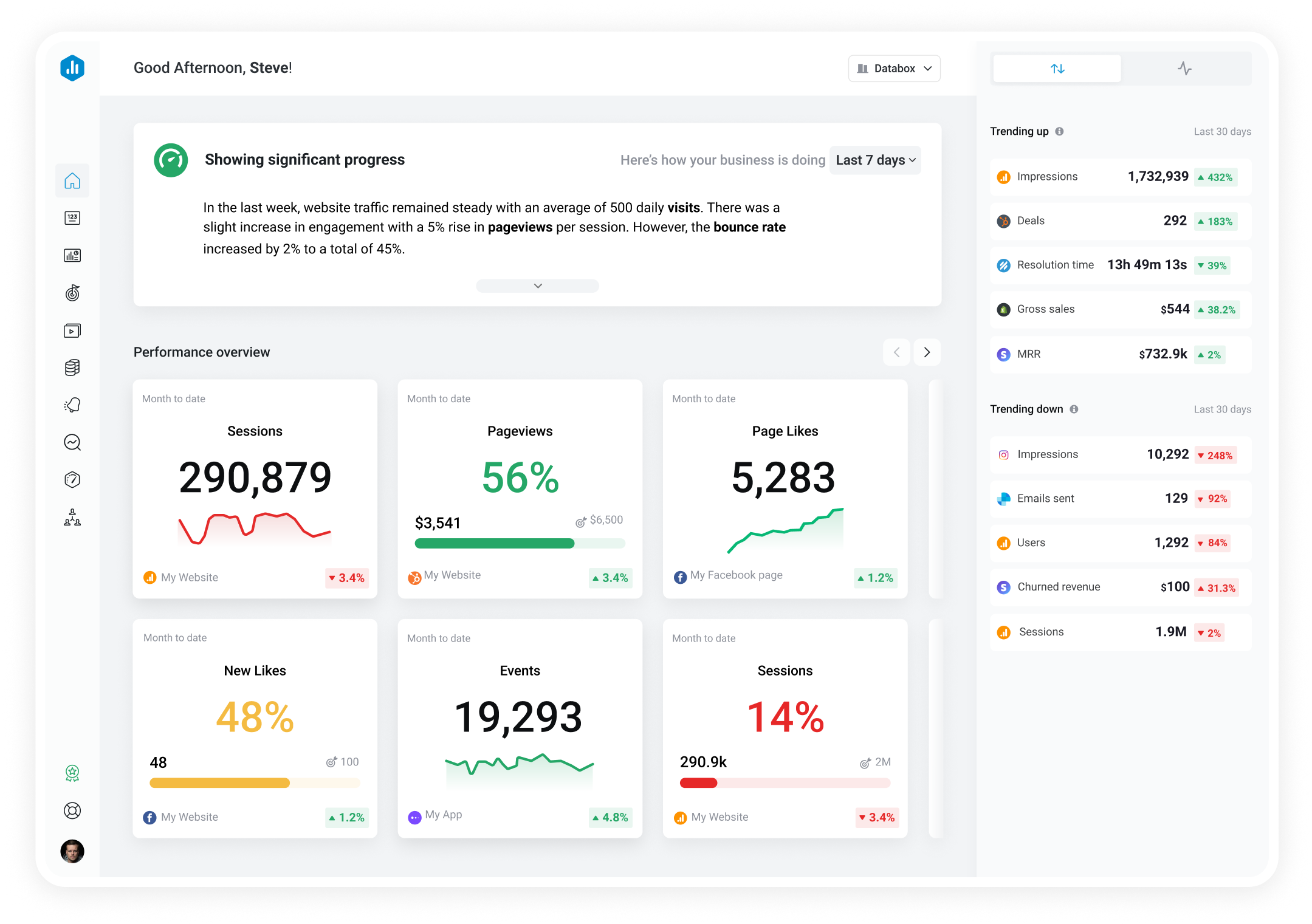Track all of your key business metrics from one screen
GET STARTED
 QuickBooks
Total Expenses (Accrual)
QuickBooks
Total Expenses (Accrual) Total Expenses (Accrual) metric represents the total expenses recorded by a company during a specific period, including incurred expenses that have not yet been paid. It is an important measure of a company's profitability and financial health.
With Databox you can track all your metrics from various data sources in one place.

Used to show a simple Metric or to draw attention to one key number.
Databox is a business analytics software that allows you to track and visualize your most important metrics from any data source in one centralized platform.
To track Total Expenses (Accrual) using Databox, follow these steps:
 Goals
Goals Scorecards
Scorecards Metric Digest
Metric Digest Metric Builder
Metric Builder Data Calculations
Data Calculations Performance Screen
Performance ScreenDatabox pulls values for ‘Total Expenses’ metric from the Profit and Loss report and Vendor Expenses report, which are accessible in QuickBooks under Reports.
Users might notice discrepancies if they are comparing values for the ‘Total Expenses’ metric with values in QuickBooks under Dashboard → Business Overview (sum of expenses and costs). This is because the Business Overview Dashboard in QuickBooks aggregates both the Cost of Goods Sold and Expenses into the Total Expenses amount without a detailed breakdown. To see this value in Databox, users should create a Calculated metric that sums the values of ‘Total Expenses’ and ‘Cost of Goods Sold’ metrics.
